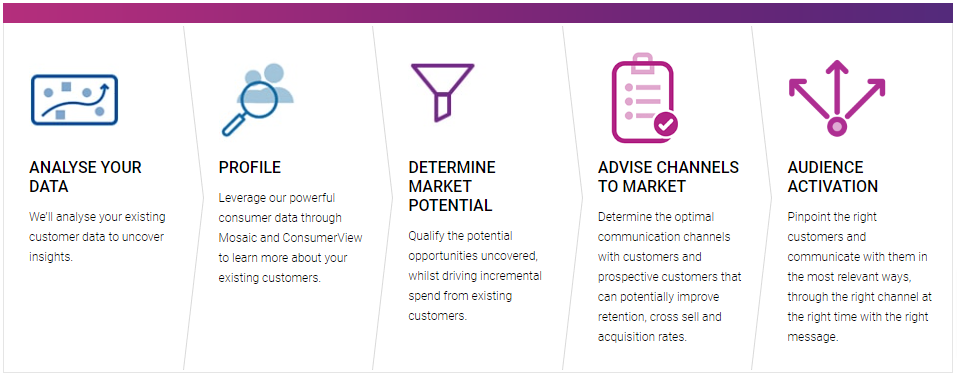The building blocks of customer acquisition
Many organisations struggle to know where to begin with understanding the behaviours and preferences of their customers. Typically, vast quantities of customer data sits in silos across various departments within an organisation, making it very hard for those organisations to plan their customer acquisition effectively.
Data profiling (as covered in our previous article) is a great place to start when organisations are looking to grow their customer numbers. By grouping all their customer data together and analysing it to identify trends and patterns, organisations start to build the insights needed to make future targeting decisions.
Data enrichment is a key element of data profiling and enhances the insights organisations can gain from their data. Appending thousands of extra data elements onto their customer data gives organisations a deeper understanding and a clear competitive advantage.
Organisations gain a lot from profiling their data to thhttps://www.experian.com.au/business/solutions/audience-targeting/enrichmentis level. The ability to segment their customer data into clear audience groups means a deep understanding of those groups and their behaviours and preferences. Organisations can then decide how and when to best communicate with those groups.
Technological advances has then enabled us to take this a step further and start to predict consumer behaviours so we can build a more agile and effective customer acquisition strategy.
Boost customer acquisition with predictive modelling
Many organisations will be fluent in building predictive models. Finance, in particular, is a department that will be adept at modelling out future scenarios in order to make decisions. The same goes for your customer acquisition strategy. By modelling out future predictions organisations can build a proactive strategy to grow their customer base.
Here are a few of the outcomes predictive modelling of consumer data can support:
- Customer retention – predict which customers are most likely to leave your business and build a strategy to keep them, or decide which ones are not worth keeping.
- Customer lead scoring & acquisition – Identify which prospects are most likely to take up your products and services so you can expand your bottom line
- Identification of the ‘next best action’ – Predict which customers represent a cross-sell opportunity, and which product they are most likely to respond to
- Store location intelligence – Predict where a new store should be opened or the impact of closing an existing one
- Product and service pricing – Determine the optimal price point for your offering to be most competitive in the market
- Risk insights – Identify those customers that are most likely to represent a repayment risk and build out plans to proactively support them
How predictive modelling of consumer data works
Experian Predict brings together our market leading data assets and analytical expertise to create predictive models that give you the ability to understand your customers in more detail and fine tune your acquisition strategy across key areas, such as audience profile, behaviours, and propensity to buy or churn.

Experian’s predictive models are uniquely developed to support your specific business goals and can work in harmony with existing models in operation within your organisation.
Dive deeper, grow faster
Predicting changes in consumer behaviour before they happen (and before the competition!) will help organisations to find new customers, adapt to changing environments proactively and grow faster. Leveraging Experian’s predictive modelling capability saves both time and the resource drain of scaling predictive models in-house.
